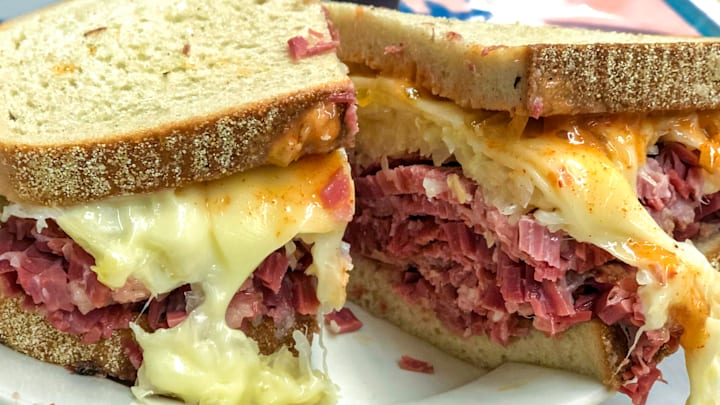The deli counter of a grocery store is home to a variety of cured meats processed into logs and infused with sodium. Whether that’s appetizing or not is subjective, but for millions of people, loading up on chicken, turkey, corned beef, and pastrami for sandwiches is as much a part of the supermarket experience as struggling with a sticky wheel on a shopping cart.
But those last two deli orders can be somewhat confusing. Pastrami seems similar to corned beef: Both are salted meats culled from cows, and both would probably be shunned by dietitians and cardiologists. So what’s the real difference?
When it comes to saturating the meat with a solution of salt and spices, both pastrami and corned beef largely get the same treatment. They’re brined in sugar, cloves and dill, as well as preservatives. And both come from cows—but that’s about where the similarities end.
While both pastrami and corned beef come from bovine origins, they originate in different places. Pastrami is taken from the shoulder, or deckle. It can also be sourced from just below the ribs. Corned beef, meanwhile, is brisket taken from the lower chest. Sometimes, pastrami can be made from brisket, though it doesn’t wind up being the same as corned beef. (More on that in a moment.)
Pastrami is also spicier, with pepper, mustard seeds, and other flavors added. Corned beef is brined, but otherwise gets no special treatment. When it comes time for cooking, pastrami gets smoked, while corned beef is broiled. The net result is two meats of similar profile that wind up with different tastes and textures thanks to prep methods. In fact, some use pastrami as a catch-all term for the smoke-and-spice process, and even apply the same technique to turkey or salmon.
Pastrami has roots in Romania, with immigrants bringing it to the U.S. in the 20th century. (It was originally made with goose.) Corned beef underwent a similar metamorphosis, with Irish immigrants using pork until they found beef more widely available in America.
And no, corned beef doesn’t actually contain any corn. The term originates with corn as a method of preserving meat with salt.
Have you got a Big Question you'd like us to answer? If so, let us know by emailing us at bigquestions@mentalfloss.com.
